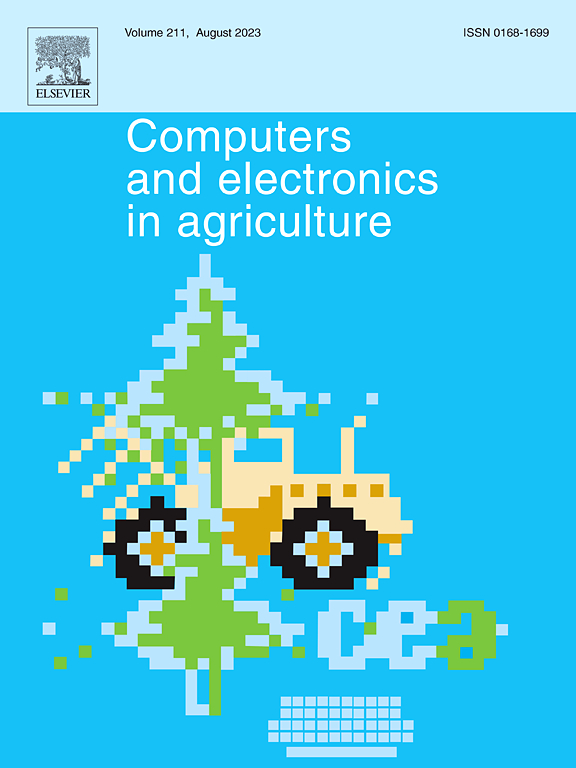Dynamic mutual training semi-supervised semantic segmentation algorithm with adaptive capability (AD-DMT) for choy sum stem segmentation and 3D positioning of cutting points
IF 7.7
1区 农林科学
Q1 AGRICULTURE, MULTIDISCIPLINARY
引用次数: 0
Abstract
Choy sum (Brassica rapa var. parachinensis) is a commonly grown leafy vegetable, primarily harvested for its stem. Accurate stem segmentation is crucial for accurate harvesting, yet the visual similarity between choy sum stems and leaves poses challenges for traditional supervised learning methods, making data labeling costly and affecting segmentation accuracy. This study introduces AD-DMT, an enhanced Dynamic Mutual Training (DMT) algorithm for semi-supervised segmentation, which improves on the original framework by incorporating: 1) Introduction of data augmentation strategies such as CutMix, brightness, and contrast adjustments to alleviate model generalization difficulties caused by data homogeneity; 2) The design of adaptive loss weights re-scaled factor (γ1 and γ2) dynamically adjusts the balance between mutual learning and entropy minimization based on training epochs; 3) A dynamic temperature coefficient is incorporated to enhance divergent learning in training by modulating Softmax output. For validation, images of field-grown choy sum were captured to evaluate AD-DMT’s performance under different labeled data ratios (1/2, 1/4, 1/8, 1/20). The results demonstrate efficient segmentation across all conditions, with mIoU values exceeding 84.0 %. Notably, even with minimal labeled data (1/20 ratio), AD-DMT achieved a 4.04 % improvement in mIoU over the baseline. Building on these segmentation results, we further determined the optimal cutting points of choy sum stems by using skeleton extraction and corner detection algorithms, calculating the three-dimensional coordinates of these points with depth images, achieving an average vertical offset error (VOE) within 6.29 mm.
求助全文
约1分钟内获得全文
求助全文
来源期刊

Computers and Electronics in Agriculture
工程技术-计算机:跨学科应用
CiteScore
15.30
自引率
14.50%
发文量
800
审稿时长
62 days
期刊介绍:
Computers and Electronics in Agriculture provides international coverage of advancements in computer hardware, software, electronic instrumentation, and control systems applied to agricultural challenges. Encompassing agronomy, horticulture, forestry, aquaculture, and animal farming, the journal publishes original papers, reviews, and applications notes. It explores the use of computers and electronics in plant or animal agricultural production, covering topics like agricultural soils, water, pests, controlled environments, and waste. The scope extends to on-farm post-harvest operations and relevant technologies, including artificial intelligence, sensors, machine vision, robotics, networking, and simulation modeling. Its companion journal, Smart Agricultural Technology, continues the focus on smart applications in production agriculture.
 求助内容:
求助内容: 应助结果提醒方式:
应助结果提醒方式:


